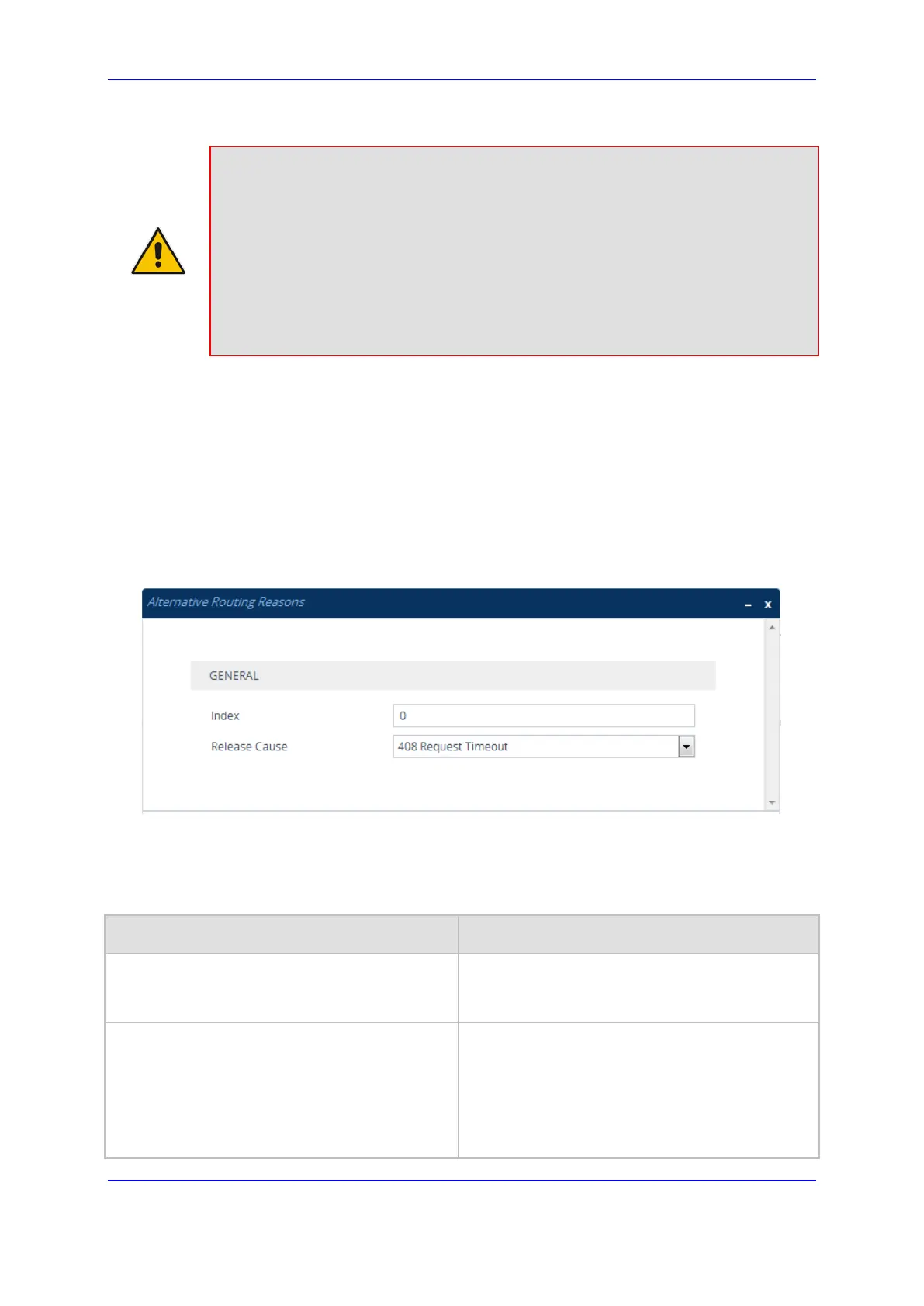Version 7.2 729 Mediant 800B Gateway & E-SBC
User's Manual 34. Routing SBC
Note:
• If the device receives a SIP 408 response, an ICMP message, or no response,
alternative routing is still performed even if the code is not configured in the
Alternative Routing Reasons table.
• SIP requests belonging to an SRD or IP Group that have reached the call limit
(maximum concurrent calls and/or call rate) as configured in the Call Admission
table are sent to an alternative route if configured in the IP-to-IP Routing table for
the SRD or IP Group. If no alternative routing rule is located, the device
automatically rejects the SIP request with a SIP 480 (Temporarily Unavailable)
response.
The following procedure describes how to configure the Alternative Routing Reasons table
through the Web interface. You can also configure it through ini file
(SBCAlternativeRoutingReasons) or CLI (configure voip > sbc routing sbc-alt-routing-
reasons).
To configure SIP reason codes for alternative IP routing:
1. Open the Alternative Routing Reasons table (Setup menu > Signaling & Media tab >
SBC folder > Routing > Alternative Reasons).
2. Click New; the following dialog box appears:
Figure 34-5: Alternative Routing Reasons Table - Dialog Box
3. Configure a SIP response code for alternative routing according to the parameters
described in the table below.
4. Click Apply.
Table 34-3: Alternative Routing Reasons Table Parameter Descriptions
Parameter Description
Index
[SBCAlternativeRoutingReasons_Index]
Defines an index number for the new table row.
Note: Each row must be configured with a unique
index.
Release Cause
rel-cause
[SBCAlternativeRoutingReasons_ReleaseCause]
Defines a SIP response code for triggering the
device's alternative routing mechanism.
[4] 4xx; [5] 5xx; [6] 6xx; [400] Bad Request; [402]
402 Payment Required; [403] Forbidden; [404]
Not Found; [405] Method Not Allowed; [406] Not
Acceptable; [408] Request Timeout (Default);
[409] Conflict; [410] Gone; [413] Request Too

